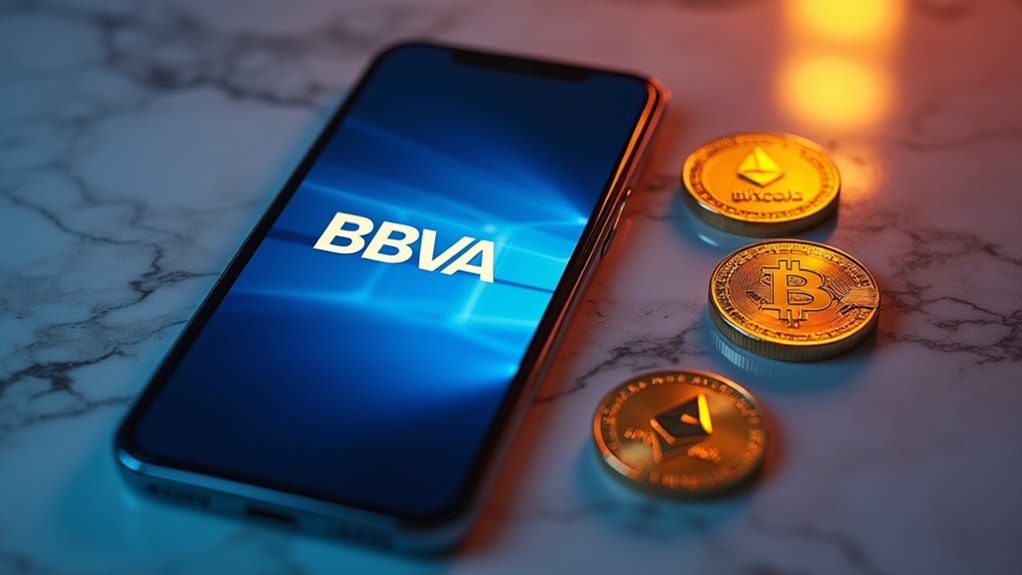BBVA has officially crossed the crypto Rubicon, launching bitcoin and ether trading and custody services for retail customers across Spain in July 2025—a move that transforms the country’s second-largest bank from a traditional financial institution into a direct participant in the digital asset revolution.
Spain’s banking giant BBVA transforms into a crypto pioneer, offering direct bitcoin and ether services to retail customers nationwide.
The service integration represents a fascinating exercise in regulatory choreography, with BBVA filing appropriate disclosures with Spain’s National Securities Market Commission (CNMV) while ensuring compliance with the European Union’s Markets in Crypto-Assets (MiCA) regulation. The timing proves fortuitous—or perhaps calculated—as increased regulatory clarity has emboldened financial institutions previously skeptical of digital assets.
What distinguishes BBVA’s approach is its seamless integration within the existing mobile banking environment, eliminating the Byzantine process of third-party exchanges and custodians that typically plague retail crypto adoption. Customers can now buy, sell, and hold bitcoin and ether directly through the BBVA app, alongside traditional banking services—a convergence that would have seemed fantastical mere years ago.
The bank’s strategic evolution follows a predictable trajectory: initial forays with private banking clients in Switzerland (2021), expansion through Garanti BBVA in Turkey (2023), and now this extensive retail rollout targeting all legal-age Spanish customers. Spain becomes the testing ground for BBVA’s retail crypto ambitions, with the service reaching all eligible customers within a week of launch. The bank’s blockchain technology expertise spans over a decade, providing the foundational infrastructure necessary for this ambitious digital transformation.
Notably, BBVA abstains from providing investment advice on cryptocurrencies—a prudent stance given the assets’ notorious volatility and regulatory sensitivities. The bank positions itself as facilitator rather than advocate, allowing customers to initiate transactions without unsolicited guidance on digital asset investment strategies.
The custody model deserves particular attention: BBVA assumes direct responsibility for crypto holdings rather than outsourcing to third-party custodians. This approach concentrates risk within the bank’s operational framework while providing customers with institutional-grade security assurances. The underlying cryptocurrencies require substantial computational process to create new units through mining, which involves solving complex mathematical puzzles that validate transactions and maintain network integrity. BBVA joins an expanding cohort of global banks that are embracing cryptocurrency services as client demand continues to surge.
This initiative signals BBVA’s recognition that traditional banking’s moat continues eroding as customer demand for digital assets intensifies. Whether this represents visionary adaptation or expensive capitulation to market pressures remains to be seen, though the bank’s measured approach suggests careful consideration of both opportunities and risks inherent in crypto integration.









